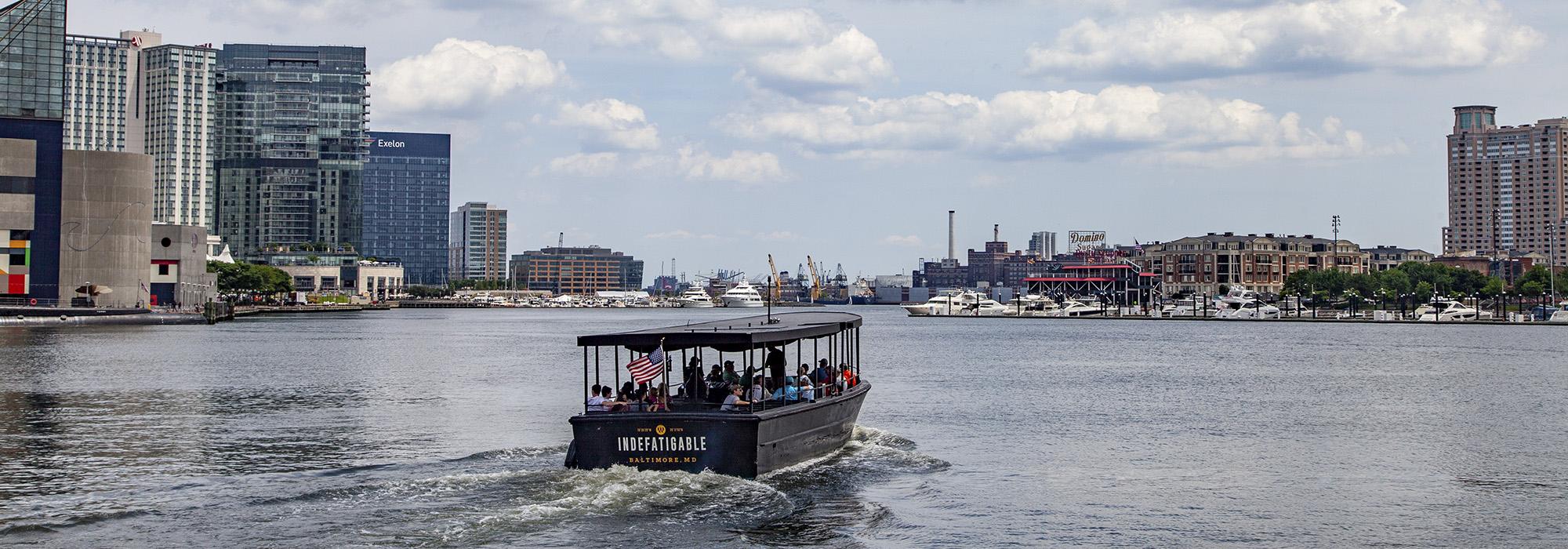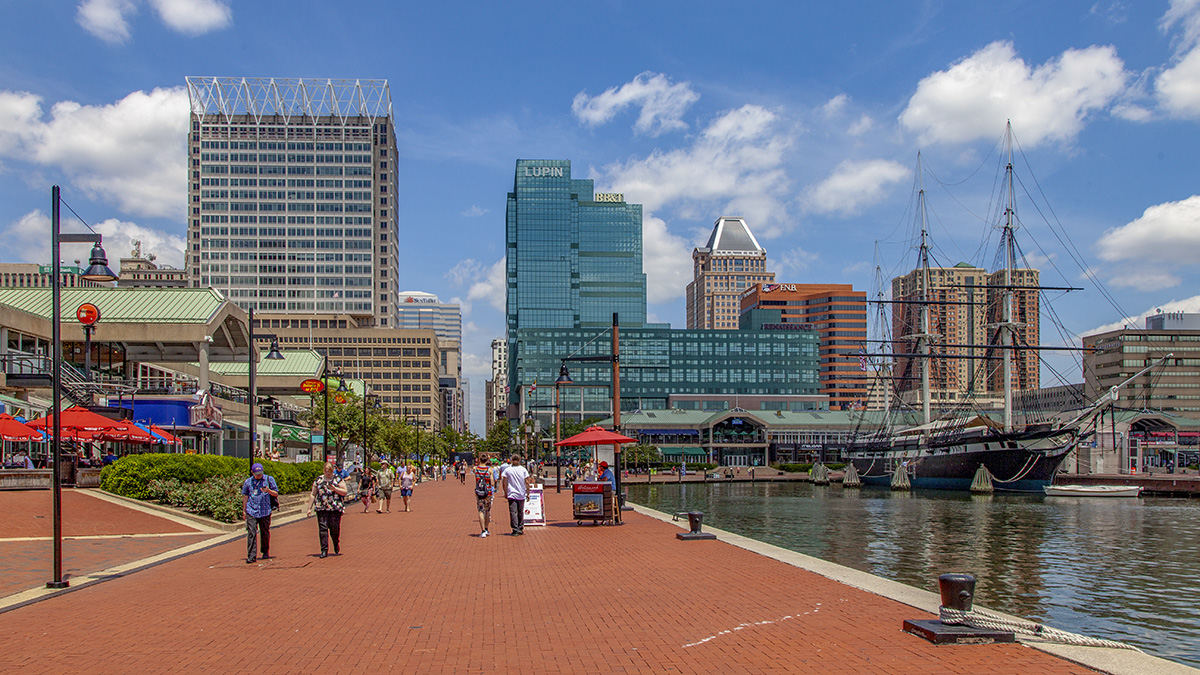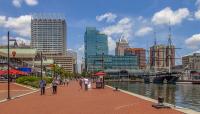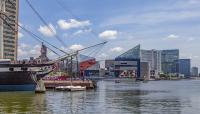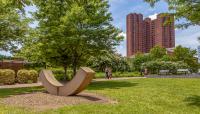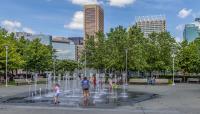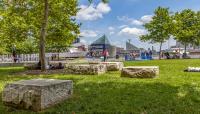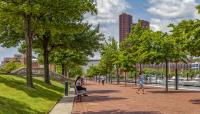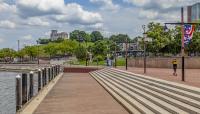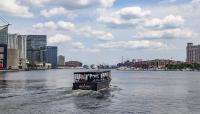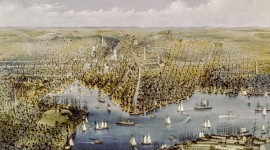Landscape Information
One of the earliest examples of a post-industrial waterfront redevelopment, this site covers some of the city’s most significant shoreline, which contributed to its growth as a major center of commerce and industry. The area began to suffer from neglect in the mid- twentieth century in the wake of postwar suburban growth at the city’s fringes. To revive the waterfront, the city engaged the design firm Wallace McHarg Roberts & Todd (WMRT) to create a long-range redevelopment plan with the ambition of refocusing activity towards the historic core. The WMRT plan, adopted in 1967, initially included 240 acres of land along the harbor.
From its northeast edge at Jones Falls, the site wraps around the historic waterfront to its southern extent below Federal Hill. While buildings were generally kept to a minimum to avoid shadows notable exceptions include the Transamerica Life Insurance Company commercial building (1975) and the World Trade Center (1977) designed by architects Vlastimil Koubek and I.M Pei, respectively. Several cultural attractions, including the USS Constellation, Harborplace, and the National Aquarium, populate the finger-like piers along the northern edge and are linked by a network of red-brick promenades, which often skirt the waterfront, unobstructed by railings. Pedestrian paths and open, flexible public spaces trace the bulkheads near the water and afford views of both the harbor and the city. The site’s western edge includes the centrally located West Shore Park, designed by architects Hord Coplan Macht and landscape architects Thomas Balsley and Associates (now SWA/Balsley) in 2007.
In 2014 the city announced the Inner Harbor 2.0 Master Plan, which envisioned, among other things, the redevelopment of Rash Field (along the southern stretch of the harbor) and the redesign of McKeldin Square, whose large Modernist fountain, designed by Thomas Todd, has since been removed.



